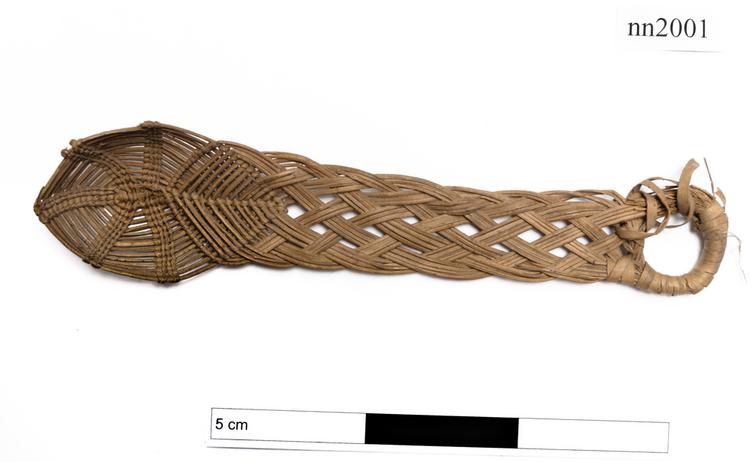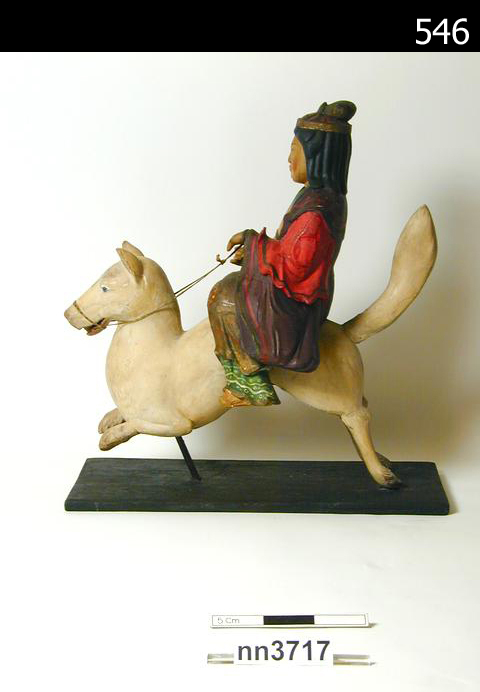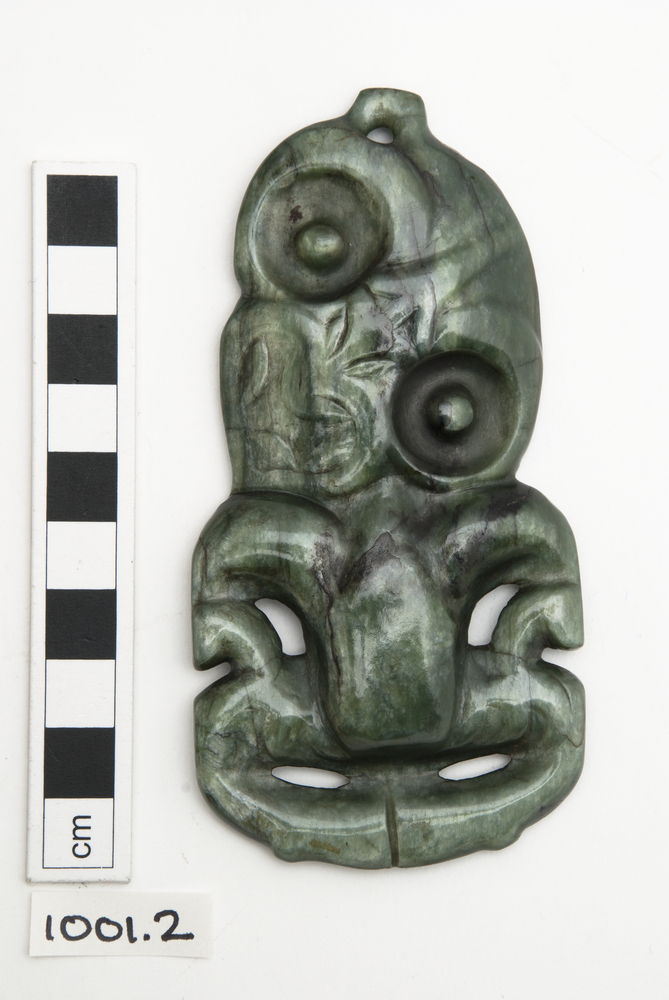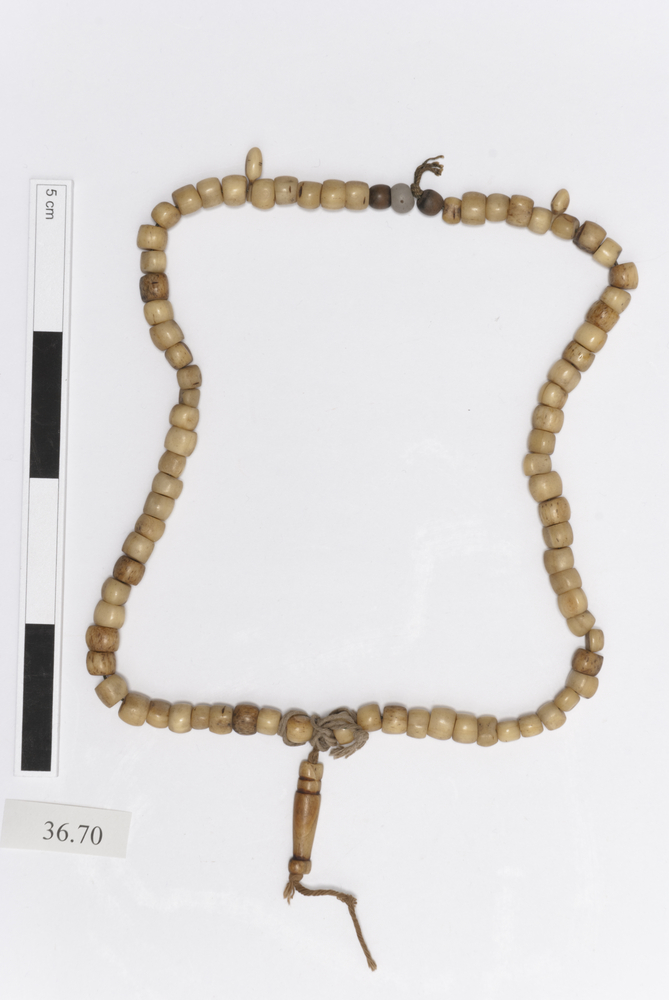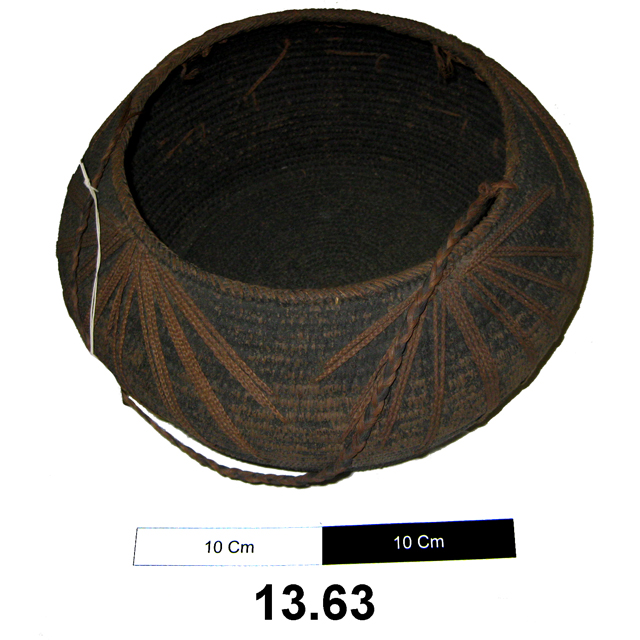
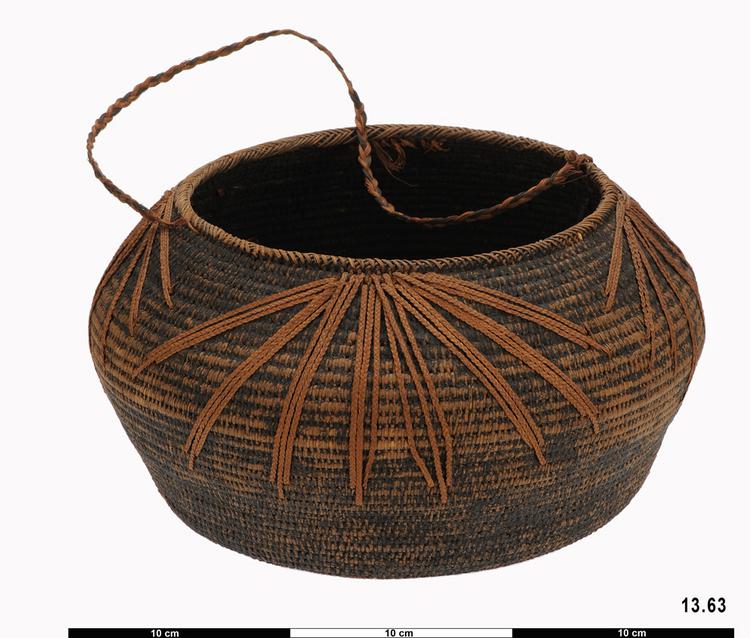
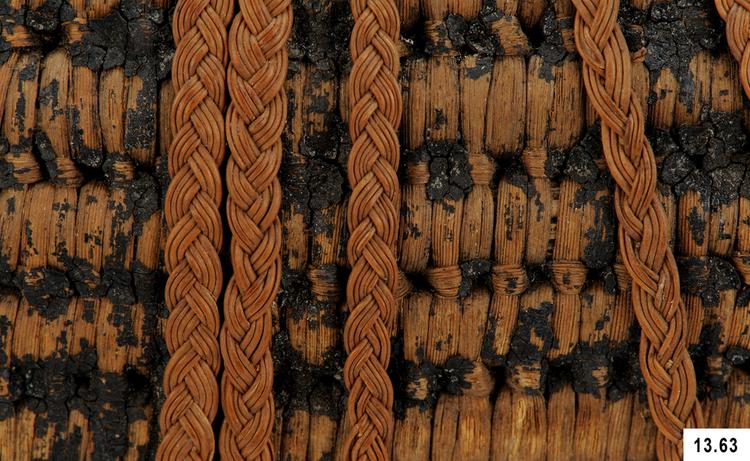
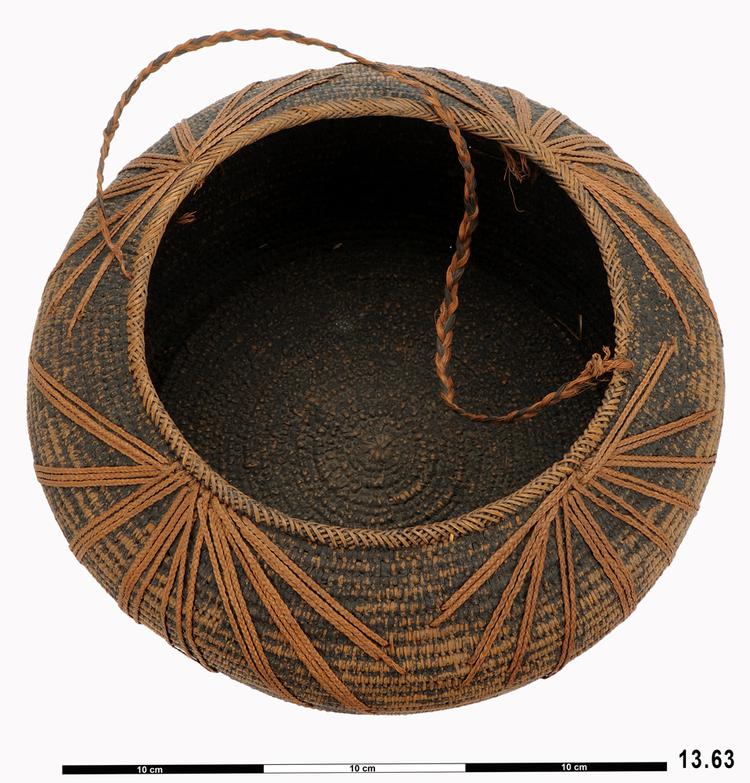
Coiled basket constructed from a circumferential coil of coconut leaflet pinnules, tightly bound together with a twilled-technique overlocking cord of finely plaited coconut husk fibre. This has been dyed black by immersion in the organic mud of the lagoon, and then ornamented with overlaid coconut-husk cordage in the natural shade. Kato 'alu are the most prestigious of Tongan basket forms, and were used to (among other things) contain the pre-Christian god images.
Globular Basket, Kato ‘Alu, Tonga, Western Polynesia. Kato ‘alu baskets of this round, slightly flattened spherical form were the most prestigious of all in Tonga, and with good reason. Each is constructed from several carefully overlapped midribs of coconut leaflets, which are tightly bound together with a running coil of coconut husk fibre (kafa). Each turn of the basket is carefully bound to that below it with each loop of this fibre, and the final form is surprisingly strong as a result. These baskets were an important item in the traditional Tongan fale (house), as they afforded a means of putting things away where very little furniture was available. Baskets such as this were also important in pre-Christian Tonga as they formed the containers inside which a collection of objects were stored together to form a god-vessel. Literally ‘canoes’ (vaka), each of these sacred baskets might contain a rare and valuable Sperm Whale’s tooth alongside a kolo throwing club or a woven and ornamented waist belt (sisi fale), all tightly wrapped together in a bundle of plain barkcloth stained with red turmeric to symbolise its spiritual power (mana). Such baskets were stored inside a temple (faletoputapu), and were brought out when it was decided to consult the deity. Coconut leaflets, coconut husk fibre. Early 19th century or before. Formerly in the private collection of Mr James Edge Partington.



